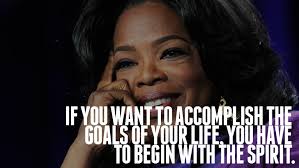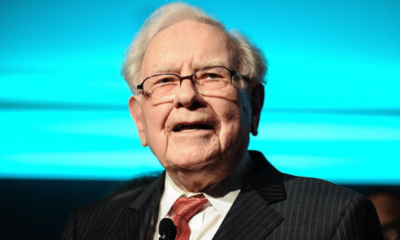Entrepreneurs
Why Oprah Winfrey Is So Successful
Oprah Winfrey is a talk show host, actress, producer and philanthropist from the USA. Winfrey is most famous for her globally viewed talk show, The Oprah Winfrey Show which was the highest rated talk show of all time.
Affectionately known as ‘The Queen of All Media’ she has been ranked the wealthiest African-American of the 20th Century and the highest contributing black philanthropist in American history. Several surveys have also revealed Oprah as ‘most influential woman in the world’ over the last two decades.
The Early Days
 Winfrey was born in 1954, in Kosciusko, Mississippi. She suffered during her teens at the hands of her male relatives and male friends of her mother who sexually abused her. Winfrey subsequently moved to live with her father in Nashville, Tennessee where she studied at Tennessee State University and started a career in TV and Radio broadcasting.
Winfrey was born in 1954, in Kosciusko, Mississippi. She suffered during her teens at the hands of her male relatives and male friends of her mother who sexually abused her. Winfrey subsequently moved to live with her father in Nashville, Tennessee where she studied at Tennessee State University and started a career in TV and Radio broadcasting.
Winfrey moved to Baltimore in 1976 where she became the host of the chat show, People Are Talking. The show was a hit with viewers and stayed that way for eight years. After this period, a Chicago TV Station hired Winfrey to host her own morning show, AM Chicago. After a few short months, Winfrey’s friendly demeanour had won her over one hundred thousand more viewers than her nearest competitor and AM Chicago went from last place to top of the ratings chart. The success took her to nationwide fame and a part in the 1985 film, The Color Purple, directed by Steven Spielberg. Winfrey was nominated for an Academy Award for Best Supporting Actress.
Oprah Winfrey’s estimated net worth is $3 Billion.
The Oprah Winfrey Show was launched in 1986 and was syndicated nationally. It was placed on 120 channels and reached an audience of 10 Million people, grossing $125 Million in its first year with Winfrey’s share being an estimated $30 Million. She shortly acquired ownership of the program from ABC, placing it under the control of her recently formed production company, Harpo Productions (Oprah spelled backwards). This allowed Winfrey to make more money for the national syndication.
Building on Success
 In the mid nineties talk shows were becoming more and more scandalous and sleazy, Winfrey promised to keep her show away from from tabloid style topics. Initially, her ratings fell but the respect that she earned by keeping to her word created a big upturn in popularity.
In the mid nineties talk shows were becoming more and more scandalous and sleazy, Winfrey promised to keep her show away from from tabloid style topics. Initially, her ratings fell but the respect that she earned by keeping to her word created a big upturn in popularity.
Winfrey undertook many projects with her production company, including, he highly rated 1989 TV miniseries, The Women of Brewster Place, which she also starred in. Winfrey also signed a multi-film deal with Disney. The initial project, Beloved, based on Pulitzer Prize winning novel by Toni Morrison and starring Winfrey and Danny Glover, got mixed reviews in 1998 and didn’t quite live up to expectations.
“The biggest adventure you can take is to live the life of your dreams.” – Oprah Winfrey
 It was during the mid-nineties that Winfrey became almost as well known for her weight loss efforts as she was for her talk show. She lost an estimated 90 pounds, taking her to her ideal weight of 150 pounds and ran the Marine Corps Marathon in Washington, D.C., in 1995. As a result of her success, Winfrey’s chef and trainer both published best-selling books.
It was during the mid-nineties that Winfrey became almost as well known for her weight loss efforts as she was for her talk show. She lost an estimated 90 pounds, taking her to her ideal weight of 150 pounds and ran the Marine Corps Marathon in Washington, D.C., in 1995. As a result of her success, Winfrey’s chef and trainer both published best-selling books.
“Turn your wounds into wisdom.” – Oprah Winfrey
 The increasingly influential Winfrey started to make a huge contribution to the publishing world by creating “Oprah’s Book Club” and adding it as a segment in her talk show. The segment rocketed many unknown authors to the top of best-seller lists and brought reading as a pastime back to the forefront of society.
The increasingly influential Winfrey started to make a huge contribution to the publishing world by creating “Oprah’s Book Club” and adding it as a segment in her talk show. The segment rocketed many unknown authors to the top of best-seller lists and brought reading as a pastime back to the forefront of society.
Winfrey secured her place at the top of the media industry and one of the wealthiest people in show business with the debut of Oxygen Media in 1999, a company she co-founded that is dedicated to producing cable and Internet programming for women. In 2002, she finalized a deal with the network to air a prime-time complement to her syndicated talk show. In 2000, she released her very popular monthly, O: The Oprah Magazine and in 2004, she signed a new contract to continue The Oprah Winfrey Show through until 2011.
The Oprah Winfrey Network
 Winfrey announced, in 2009, that she would be bringing her program to an end when contract with ABC ended in 2011. She then moved to her own network the Oprah Winfrey Network, which was a joint venture with Discovery Communications. Even though the network made a questionable start financially, it made headlines in the early part of 2013 when it aired an interview that Oprah conducted with Lance Armstrong, the seven time Tour de France winner who had admitted to the use of performance enhancing drug use throughout his career.
Winfrey announced, in 2009, that she would be bringing her program to an end when contract with ABC ended in 2011. She then moved to her own network the Oprah Winfrey Network, which was a joint venture with Discovery Communications. Even though the network made a questionable start financially, it made headlines in the early part of 2013 when it aired an interview that Oprah conducted with Lance Armstrong, the seven time Tour de France winner who had admitted to the use of performance enhancing drug use throughout his career.
Philanthropy
 After spending six years among the top 50 most generous Americans, Winfrey had given away an estimated $400 Million to educational causes by 2012. In 2013 she donated $12 Million to the Smithsonian’s National Museum of African American History and Culture.
After spending six years among the top 50 most generous Americans, Winfrey had given away an estimated $400 Million to educational causes by 2012. In 2013 she donated $12 Million to the Smithsonian’s National Museum of African American History and Culture.
Winfrey created Oprah’s Angel Network in 1998, a charity that provided grants for non-profit organizations and charitable projects from all around the world. Up until the charity’s closing in 2010, Oprah’s Angel Network raised more than $80 Million. Winfrey covered all the admin costs of the charity so that every penny raised would go to the charitable programs. The Angel Network also raised $7 Million for AIDS effected children in South Africa as well as several other causes in the region. Winfrey also gave her time and $40 Million of her money to develop the Oprah Winfrey Leadership Academy for Girls in Johannesburg.
After Hurricane Katrina, Oprah created the Oprah Angel Network Katrina Registry that contributed $11 Million to the relief efforts and Winfrey gave $10 Million of her own money.
Oprah Winfrey on Career, Life and Leadership
Conclusion
Oprah Winfrey really is one of the most inspirational women in history. Winfrey teaches us that no matter how much of a challenging start that we have in life, it has no bearing on how we finish.
Winfrey’s ability to consistently think of ways to reach more people, both through her career and her philanthropy has enabled her to become a billionaire as well as an incredibly influential public figure.
How could aiming to reach more people help you in your life?
Oprah Winfrey Picture Quote

Change Your Mindset
The Silent Skill That Makes People Respect You Instantly
What truly earns respect and why most people go about it the wrong way

Everybody craves respect but not everyone earns it. Some people believe that a title, years of experience, or a position of authority automatically entitles them to respect. (more…)
Entrepreneurs
The Essential Skills Every Entrepreneur Needs In 2026
Success in the digital age isn’t about luck. It’s about mastering the skills that separate dreamers from doers.

When I was 22 years old, I started my first side hustle as a ghostwriter. (more…)
Business
The Hidden Money Pit in Your Operations (and How to Use It)
See how smart asset management software is quietly saving businesses thousands in wasted time, stock, and maintenance.

Trimming unnecessary expenses and minimizing resources is a general practice in running a business effectively. Asset management software can help you achieve those goals. (more…)
Business
Thinking of Buying A Business? These 6 Sectors Quietly Produce the Best Deals
Before you buy your next venture, check out the sectors where successful businesses are changing hands every day.

All entrepreneurs have a desire to be the masters behind a successful venture. Buying an established business is a great choice for many. This provides instant access to an established market with existing infrastructure and clients. (more…)
-

 Business4 weeks ago
Business4 weeks agoWhy Your E-Commerce Fulfilment Is Probably Broken (And How to Fix It)
-

 Shift Your Mindset4 weeks ago
Shift Your Mindset4 weeks ago11 E’s That Define Every Great Leader And Why Most People Miss Them
-

 Did You Know3 weeks ago
Did You Know3 weeks agoThe Success Patterns You Inherited (And Didn’t Notice)
-

 Entrepreneurs2 weeks ago
Entrepreneurs2 weeks agoThe Essential Skills Every Entrepreneur Needs In 2026
-

 Business3 weeks ago
Business3 weeks agoThe Hidden Money Pit in Your Operations (and How to Use It)
-

 Change Your Mindset2 weeks ago
Change Your Mindset2 weeks agoHow to Turn Your Mind Into Your Greatest Asset (Instead of Your Enemy)
-

 Change Your Mindset2 weeks ago
Change Your Mindset2 weeks agoThe Silent Skill That Makes People Respect You Instantly
-

 Life1 week ago
Life1 week ago10 Research-Backed Steps to Create Real Change This New Year

























3 Comments